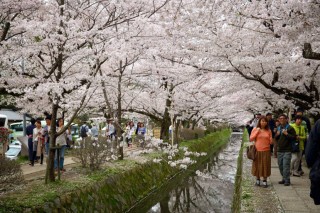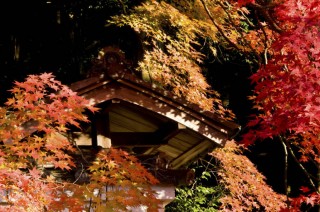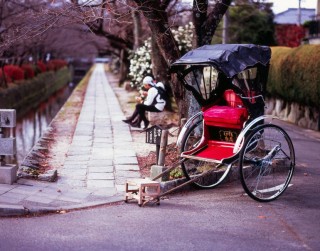Loading
Search
▼ The Path of Philosophy
- Category:Tourism

JAPAN CHEAPO
To the east of one of Japan’s most respected and highly acclaimed universities, Kyoto University, lies Philosopher’s Path named so as Kitaro Nishida often walked along it for his meditation. Nishida was a representative philosopher, who graduated from Kyoto University and was even distinguished for his contribution to Japanese literature.
The 1.5-kilometer-long path stretching from Ginkakuji to Nyakuouji is one of Kyoto’s most famous scenes, and people often flock here to view the cherry trees in spring or colorful leaves in autumn lining the canal leading towards Lake Biwa, Japan’s largest freshwater lake.
The path of meditation
Philosopher’s Path is a great place to visit all year round as the scenery offers something unique for every season. Spring, however, is by far the most popular period as during this time the pink and white cherry blossom trees lining the path and canal are in full blossom. Accompanying the coming of the cherry blossom is the tradition of “ohanami” during which people celebrate this moment with each other by gathering around to have a drink, a bite to eat and of course a pleasant chat while enjoying the scenery.
During the summer another amazing spectacle can be experienced along the path as countless of fireflies appear dotting the area. With a cool evening breeze during Kansai’s hot summers, this again is a great moment to enjoy with friends or family. The carps who call the canal their home, happily swim along it and would greatly appreciate a bit of bread if you would like to feed them.
Whereas the path brings much joy during the spring and summer, during autumn and winter it most profoundly beckons moments of reflection. With their leaves changing in autumn, the trees slowly turning bare as their leaves fall down to follow the flow in the river and one is reminded of how fleeting things are in life.
When winter finally arrives the bare scenery tends to bring forth tranquillity and peace, especially when beautifully covered in a layer of pure white snow. Do not forget to check underneath the countless bridges over the canal as the carps will be hiding underneath there to keep themselves warm.
These are sensations both Japanese and foreign visitors tend to experience while walking along the path and are probably the same sensations Nishida while he did so himself. The area has, unfortunately, become more touristic over the years and many shops line the area today. The plant life is nonetheless very much abundant and attracts a great variety of bird life, whose songs can often by heard. Especially in winter, the birds beautiful songs help you completely emerge yourself in the tranquillity of the path.
Access
Kyoto’s city buses 5, 7 and 10 coming from Kyoto Station stop near Ginkaku-ji, which is near the start of the path. Alternatively, you can also take the subway to Demachiyanagi Station on the Keihan Line located about 20 minutes away as you walk away from the river towards the mountains and past Kyoto University. Another option is to walk the path backwards starting at Nyakuouji by taking city bus 100 to the bus stop named “Miyanomaecho”.
At various locations along the path rickshaws offer their services for about 3.000 yen for 10 minutes or 8.000 yen for 30 minutes. In my opinion, this is a bit expensive and is something I would only recommend doing if you would really to experience riding in a rickshaw. Furthermore, the path is to be enjoyed while walking along it and taking your time to take in the scenery.
- January 15, 2016
- Comment (0)
- Trackback(0)




